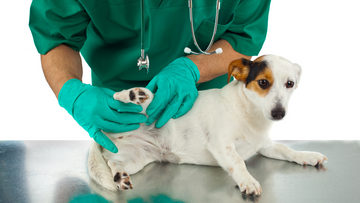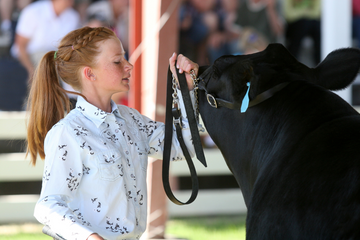Types of Arthritis in Dogs
Arthritis can cause a lot of pain for your dog. It is a common condition affecting the joints. There are three main types of arthritis that a dog can develop: osteoarthritis, rheumatoid arthritis, and infectious arthritis.

Osteoarthritis
Osteoarthritis is the most common type of arthritis, often called “arthritis.” This condition usually develops as a dog ages. When the cartilage in the joint wears away, the bones of the joints rub together. This can cause stiffness, inflammation, pain, and loss of mobility.
Rheumatoid Arthritis
Rheumatoid arthritis (RA) is another common type of arthritis. However, RA is caused by an autoimmune disorder. With this type of arthritis, the dog’s immune system attacks the joints. Dogs can experience inflammation, pain, and stiffness. Traditionally, RA affects the smaller joints around the lower leg and paws.
Infectious Arthritis
A rare form of arthritis, infection arthritis, stems from an infection in the joint. Bacteria or a virus can cause the infection through an open wound or during surgery. Infectious arthritis causes pain, inflammation, and even fever.
Recognizing Arthritis in Dogs
Arthritis is a common condition often plaguing older dogs. While many actions can be taken to prevent osteoarthritis, there is less control over the other two types. Recognizing the symptoms of all three types can help your dog avoid unnecessary pain.
Here is a list of common physical symptoms:
- Limping
- Difficulty standing
- Difficulty lying down
- Reluctance to jump
- Unable to climb stairs
- Stiffness
- Decreased activity level
- Licking joints
- Whining when touched
- Inflammation
- Heat in the joints
- Loss of muscle
- Changes in gait
Dogs with arthritis may also show changes in their behavior because of the daily pain they are experiencing. Watch out for:
- Aggression
- Loss of appetite
- Changes in sleep patterns
- Loss of interest in playing
- Loss of interest in daily routine
How to Diagnose Arthritis
Instinctively, dogs tend to hide pain from their pack. This tendency can make it difficult to diagnose arthritis. However, if you suspect your dog is in pain, consult your veterinarian.
Physical Examination
The first thing your veterinarian will do is a physical exam. She will check for stiffness in the joints as well as inflammation. This will typically come from manually manipulating the joints to check the range of motion and signs of pain.
Imaging Techniques
If necessary, your veterinarian will order X-rays, a CT scan, or an MRI to view the joint better. This will help her identify any abnormalities in the joint and may help pinpoint the cause of the pain.
Laboratory Tests
Senior dogs are more prone to chronic conditions with similar symptoms to arthritis. Blood tests are generally recommended to ensure the dog does not have any additional underlying conditions. Blood tests can also help your vet determine the effectiveness of pain management medications.
Treatment Options
Pain management is the most important goal for a dog suffering from arthritis. Work with your veterinarian to help your dog feel the best he can. Your veterinarian may recommend a combination of the following treatments:
- Medications
- Physical Therapy
- Surgery






















